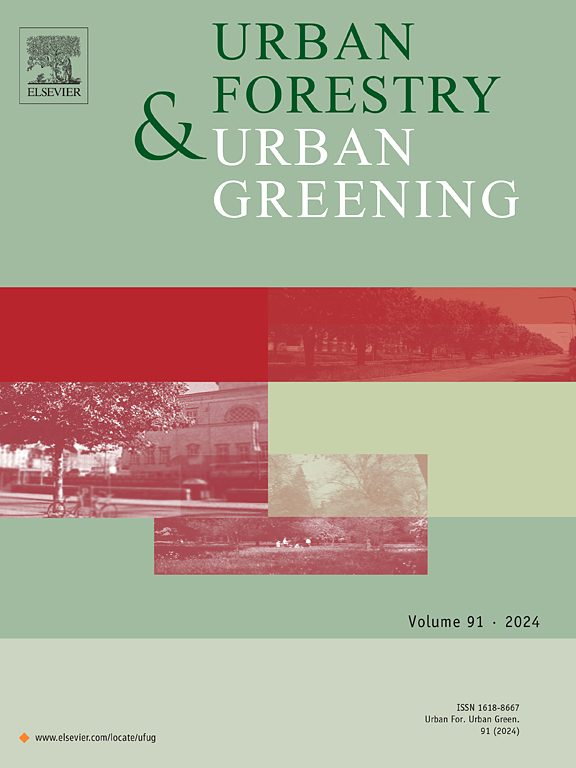Optimizing roadside vegetation using deep reinforcement learning to improve thermal environment
IF 6
2区 环境科学与生态学
Q1 ENVIRONMENTAL STUDIES
引用次数: 0
Abstract
Urbanization has accelerated, exacerbating the urban heat island effect, particularly in roadside areas. Adjusting roadside vegetation has emerged as a crucial strategy to ameliorate the thermal conditions along roadsides. However, conventional methods are often limited by fixed vegetation types and layout schemes within a limited area, posing challenges in effectively responding to the diverse optimization needs of complex environments. To address this issue, this study proposes a multitype vegetation optimization model based on reinforcement learning. Using street view images, we extracted large-scale, high resolution tree-shrub-grass multitype vegetation. Simultaneously, the optimization and adjustment of the vegetation structure is formulated as a Markov decision process. A pretrained nonlinear model is used to construct a reward mechanism for the cooling effect, and then a reinforcement learning algorithm with the twin delayed deep deterministic policy gradient (TD3) is used for the optimization strategy. Empirical results reveal that in the primary urban area of Beijing, increasing tree density and reducing grass coverage are the most effective strategies for roadside cooling in high-density built-up areas. Conversely, increasing grass coverage is optimal for roadside cooling at urban peripheries. Furthermore, spatially integrated optimization led to a reduction in local land surface temperature (LST) of approximately 1–3 °C, with an average LST reduction of 1.04 °C across the study area. Densely clustered trees contribute to localized cooling effects, whereas dispersed grasses are more effective at promoting overall cooling. These findings offer valuable insights for the formulation of effective urban vegetation planning and management strategies aimed at enhancing the roadside thermal environment.
求助全文
约1分钟内获得全文
求助全文
来源期刊

Urban Forestry & Urban Greening
FORESTRY-
CiteScore
11.70
自引率
12.50%
发文量
289
审稿时长
70 days
期刊介绍:
Urban Forestry and Urban Greening is a refereed, international journal aimed at presenting high-quality research with urban and peri-urban woody and non-woody vegetation and its use, planning, design, establishment and management as its main topics. Urban Forestry and Urban Greening concentrates on all tree-dominated (as joint together in the urban forest) as well as other green resources in and around urban areas, such as woodlands, public and private urban parks and gardens, urban nature areas, street tree and square plantations, botanical gardens and cemeteries.
The journal welcomes basic and applied research papers, as well as review papers and short communications. Contributions should focus on one or more of the following aspects:
-Form and functions of urban forests and other vegetation, including aspects of urban ecology.
-Policy-making, planning and design related to urban forests and other vegetation.
-Selection and establishment of tree resources and other vegetation for urban environments.
-Management of urban forests and other vegetation.
Original contributions of a high academic standard are invited from a wide range of disciplines and fields, including forestry, biology, horticulture, arboriculture, landscape ecology, pathology, soil science, hydrology, landscape architecture, landscape planning, urban planning and design, economics, sociology, environmental psychology, public health, and education.
 求助内容:
求助内容: 应助结果提醒方式:
应助结果提醒方式:


